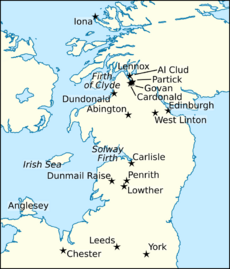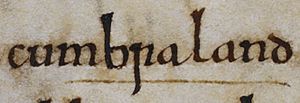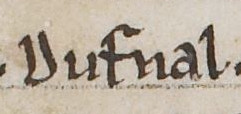Dyfnwal ab Owain facts for kids
Quick facts for kids Dyfnwal ab Owain |
|
|---|---|

Dyfnwal's name as it appears on folio 15r of Oxford Bodleian Library Rawlinson B 488 (the Annals of Tigernach): "Domnall mac Eoain".
|
|
| King of Strathclyde | |
| Predecessor | Owain ap Dyfnwal |
| Successor | Rhydderch or Máel Coluim |
| Died | 975 |
| Issue | Rhydderch?, Máel Coluim, and Owain? |
| Father | Owain ap Dyfnwal |
Dyfnwal ab Owain (died 975) was a king who ruled the Kingdom of Strathclyde in the 900s. He was the son of Owain ap Dyfnwal, who was also a King of Strathclyde. Dyfnwal belonged to the royal family of this kingdom.
During the 800s and 900s, the Kingdom of Strathclyde grew a lot, especially towards the south. Because it stretched far beyond the River Clyde valley, it became known as the Kingdom of Cumbria. By 927, the kingdom reached as far south as the River Eamont.
Contents
Dyfnwal's Reign: A King of the Cumbrians
Dyfnwal likely ruled from the 930s to the 970s. We first hear about him in the 940s. He helped a religious leader named Cathróe travel through his lands to Europe.
Around 945, the English King Edmund attacked the Cumbrian kingdom. It's said that two of Dyfnwal's sons were blinded by the English. This might mean Dyfnwal had broken a promise to King Edmund. Perhaps he had given shelter to Viking leaders who were enemies of Edmund. King Edmund then gave control of the Cumbrian kingdom to Máel Coluim mac Domnaill, King of Alba, who was the King of Scotland. It's not clear how much power the Scots truly had over Cumbria.
In 971, Cuilén mac Illuilb, the King of Scotland, was killed by Rhydderch ap Dyfnwal. Rhydderch was one of Dyfnwal's sons. After this, Cináed mac Maíl Choluim, who became the next King of Scotland, attacked Cumbrian lands. This was probably to get revenge.
The next year, in 973, Edgar, King of the English held an important meeting in Chester. Many northern kings attended this meeting. Both Dyfnwal and his son, Máel Coluim, were there. Máel Coluim was called "King of the Cumbrians" at this meeting. This could mean that Dyfnwal had already given up his throne.
The Kingdom of Strathclyde: A Changing Realm
For many centuries, the main power center of the Kingdom of Al Clud was a strong fort called Al Clud (which means "Rock of the Clyde"). In 870, Viking raiders from Ireland captured this British fort. After this, the kingdom's center likely moved further up the River Clyde. The kingdom itself started to be called Ystrad Clud, or Strathclyde, after the Clyde valley.
After losing Al Clud, the Kingdom of Strathclyde began to expand. By 927, its southern border reached the River Eamont, near Penrith. This expansion might have happened because the Kingdom of Northumbria became weaker due to Viking attacks. The Britons and Vikings might have even worked together in the late 800s or early 900s. Over time, the Kingdom of Strathclyde became more known as the Kingdom of Cumbria. This name showed that it had grown far beyond the Clyde valley.

Dyfnwal was the son of Owain ap Dyfnwal, who was also a King of Strathclyde. The names of Dyfnwal and his family suggest they were part of the royal family of Strathclyde. Dyfnwal's sons included Rhydderch, Máel Coluim, and Owain. His son Máel Coluim had a Gaelic name. This might suggest a marriage between Dyfnwal's family and the Scottish royal family.
Dyfnwal's father is mentioned in 934. Dyfnwal's own reign may have lasted from the 930s to the 970s.
English and Scottish Relations
In 945, English records show that King Edmund of England attacked the Cumbrian kingdom. He then "let" or gave the region to Máel Coluim mac Domnaill, the King of Scotland. Some records say Edmund was helped by Hywel Dda, King of Dyfed and that two of Dyfnwal's sons were blinded. This suggests Dyfnwal might have broken promises to the English. He might have been punished for sheltering Viking leaders who were enemies of England.
The English King Edmund and the Scottish King Máel Coluim mac Domnaill worked closely together. This suggests that the Viking leader Amlaíb Cúarán was probably not hiding with the Scots. Edmund's attack on Dyfnwal's kingdom seems to have been aimed at breaking any alliance between Cumbria and the Vikings. It also aimed to stop any Viking attacks from the Forth-Clyde area. The English might have also wanted to take back lands that Cumbria had gained.
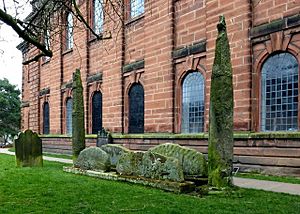
Some sources say that Máel Coluim mac Domnaill was given Cumbrian land to hold as a fief from the English. However, more reliable sources suggest Edmund simply recognized Scottish rights in the area, perhaps for collecting tribute. Edmund might have allowed the Scots to collect tribute from the Cumbrians in exchange for keeping them in check. This could have been because the Cumbrian territories were closer to Scotland's influence than England's.
It's not clear how much power Máel Coluim mac Domnaill had over the Cumbrians. Dyfnwal continued to live for decades, and there were later Cumbrian kings. The agreement between the English and Scots might have been a way for England to secure its northern border from Viking threats.
In 952, some Irish records mention an attack on the Vikings in Northumbria. This attack was carried out by an alliance of English, Scots, and Cumbrians. If these records refer to the Cumbrians, it would mean that Dyfnwal's forces were supporting the English and Scots.
Family and Successors: Dyfnwal's Legacy

After the Scottish King Illulb mac Custantín died in 962, Dub mac Maíl Choluim became king, followed by Illulb's son, Cuilén. Cuilén was killed by Britons in 971. Some records say he was killed by Rhydderch ap Dyfnwal, Dyfnwal's son, because of a family dispute involving Rhydderch's daughter.
Even though Rhydderch is not specifically called a king, his ability to defeat Cuilén's forces suggests he was a very important person. Cuilén's death might have happened while he was trying to collect taxes from the Cumbrians. Or it could be linked to his father's earlier capture of Edinburgh. If so, Rhydderch might have used Cuilén's vulnerable position to get revenge for his daughter.

Cuilén was succeeded by his relative Cináed mac Maíl Choluim. One of Cináed's first actions as King of Scotland was to invade the Cumbrian kingdom. This attack was likely revenge for Cuilén's death. However, Cináed's invasion ended in defeat. This shows that the Cumbrian kingdom was a strong power. It's possible that Rhydderch had become king by this time, or Dyfnwal was still king. Cináed's attack might have been the last conflict of Dyfnwal's reign.
The Assembly of Kings
There is evidence that Dyfnwal was among the kings who met with King Edgar of England in Chester in 973. After Edgar was crowned king that year, he gathered a large navy and met with six kings in Chester. Later stories increased the number to eight kings. These stories claimed the kings rowed Edgar down the River Dee as a sign of their submission.
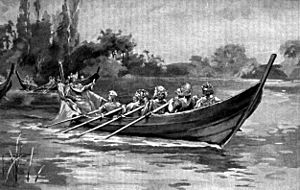
While the story of the kings rowing Edgar might be an exaggeration, most of the kings named in the stories can be linked to real rulers of that time. This suggests that some of these men did meet with Edgar. Although later accounts say the kings submitted to Edgar, the Anglo-Saxon Chronicle simply states they agreed to work together.
One of the named kings was Dyfnwal. Another was his son, Máel Coluim, who was called "King of the Cumbrians." This could mean Dyfnwal had already given up his throne to Máel Coluim before the meeting. If Máel Coluim was king in 973, Dyfnwal might have attended as an experienced advisor.
The meeting at Chester might have been about cooperation along the English borders. Chester was a good neutral place for everyone to meet.
Death and Successors
Both Dyfnwal and King Edgar of England died in 975. According to Irish records, which call Dyfnwal "King of the Britons," he died while on a religious journey. Welsh texts confirm this, saying Dyfnwal died in Rome after becoming a monk. It was common for rulers to retire to a religious life late in their lives. Dyfnwal might have chosen this path, or perhaps he was forced to, possibly because of his son Rhydderch's actions.
It's possible that Dyfnwal was still king in 973. King Edgar's death two years later might have led to Dyfnwal giving the kingship to his son Máel Coluim. Máel Coluim's presence at the 973 assembly might have been to ensure his father's safe journey through Edgar's lands.
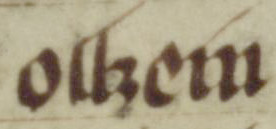
Records don't mention the Cumbrian kingdom between Dyfnwal's death in 975 and his son Máel Coluim's death in 997. However, there's reason to believe Dyfnwal had another son named Owain who ruled after Máel Coluim. Records state that an Owain, son of Dyfnwal, was killed in 1015. This Owain seems to have become King of Cumbria after Máel Coluim's death in 997.
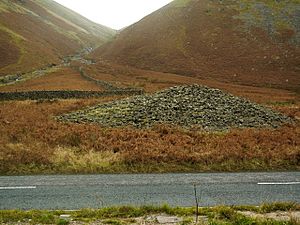
Dyfnwal might be the person remembered in the name of a mountain pass in the Lake District called Dunmail Raise. This name means "Dyfnwal's Cairn." According to local stories, a king named Dunmail was killed by Saxons on the pass and buried under a pile of stones (a cairn). This legend might date back to the 1500s. The cairn is located between the lanes of the A591 road. It seems to have marked an old border between two regions and possibly the southern edge of the Cumbrian kingdom.
Other places that might be named after Dyfnwal include Cardonald and Dundonald/Dundonald Castle in Scotland.


